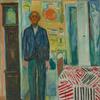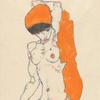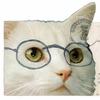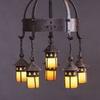Worcester Art Museum Presents First Major U.S. Exhibition Examining Rise, Fall, and Resurgence of the Cyanotype
- WORCESTER, Massachusetts
- /
- February 15, 2016
Through April 24, 2016, the first major U.S. exhibition to trace the historical trajectory of the cyanotype is on view at the Worcester Art Museum (WAM). Cyanotype: Photography’s Blue Period presents a sweeping survey of the medium’s evolution, from its rise as a popular photographic tool in the late 19th and early 20th centuries through its revitalization by contemporary artists. The exhibition is organized thematically by figure, form, and place with historic works by such renowned photographers as Anna Atkins, Henry Bosse, and Arthur Wesley Dow, presented alongside contemporary examples by artists including Christian Marclay, Annie Lopez, and Hugh Scott-Douglas, among others. A number of works will be on view for the first time, including recent acquisitions and key loans.
Cyanotype: Photography’s Blue Period is organized in partnership with Kristina Wilson, exhibition co-curator and Clark University associate professor in the Department of Visual and Performing Arts.
“We are thrilled to collaborate with Clark University on this unprecedented investigation into the rich history of the cyanotype,” said exhibition co-curator and WAM’s Assistant Curator of Prints, Drawings, and Photographs, Nancy Burns. “Through this exhibition, we hope to place a much-deserved spotlight on the medium, which in many ways was a predecessor to the Polaroid for its speed and portability. The range of images on view showcases how the cyanotype was first embraced by the general public before experiencing a renaissance brought on by fine artists of the late 20th century who used the process to produce unique effects.”
In his lifetime, English astronomer, scientist, and chemist Sir John Herschel was best known for having invented sodium thiosulfate, the “fixer” needed to stop photographs from continuing to develop after exposure. Less appreciated was his invention of the cyanotype in 1842. Considered a “cameraless” form of photography, cyanotypes are produced through a flexible process that distinguishes it from most other photographic methods. Needing only sunlight and clean water, images can be developed on the spot using a variety of materials.
Characterized by its distinctive blue tone, the cyanotype became the preferred photographic process among the general public during the late 19th and early 20th centuries. The simplicity of producing images allowed families and friends to document their daily lives and travels with ease. During this time, fine artists were also using the cyanotype primarily as a tool for developing proofs before producing a final work in gelatin and platinum, a more time-consuming method that was favored by the art establishment. Despite using the cyanotype format to test a final composition, artists and critics rejected the medium for its aesthetic value, perceiving it as a pedestrian form of photography. A number of the vernacular works created at the turn of the century are represented in the exhibition— including postcards—the most popular format for the cyanotype—and a variety of American vernacular landscapes on silk.
Also on view is a series of prints taken by Worcester-based photographer Frederick K. Coulson, whose work was undiscovered until this exhibition. Son to the gardener of WAM founder Stephen Salisbury III, Coulson produced in his lifetime a high-quality body of work drawing on traditional compositional elements of Western painting, encompassing posed portraits, carefully arranged still lifes, and interior settings, including an image taken of WAM’s inaugural exhibition in 1898. An amateur photographer turned architect, Coulson is also the subject of the companion publication Frederick Coulson: Blueprints of a Golden Age, written by former WAM Director James Welu and published by Marquand Press.
With the rise of digital photography in the 1990s, fine artists came to embrace the traditional nature of the cyanotype. The cyanotype had particular appeal as the process allows for the production of traditional images using a negative, or photograms—photographs created by placing the object represented in direct contact with the paper. With this return to pre-gelatin processes, contemporary artists seized the possibilities of the cyanotype format by manipulating it to achieve works ranging from the abstract to the surreal.
Highlights of contemporary works in the exhibition include:
• Medical Condition (2013), for which Arizona-based artist Annie Lopez developed cyanotypes onto tamale wrappers with images representing personal and family memories, and sewed them together to create a vintage-inspired dress form;
• Unwound Cassette (2012) is a five-foot tall photogram created by Christian Marclay that nods to another pre-digital, and arguably obsolete technology: the audio cassette;
• Untitled (2012) by Hugh Scott-Douglas, an abstract work in which the artist explores the chromatic variation resulting from different levels of exposure to the sun during the cyanotype process;
• Littoral Drift #3 (2013) by Meghann Riepenhoff—a new acquisition by the Worcester Art Museum—depicting a seascape and created by placing the treated cyanotype paper directly into California’s Rodeo Beach. Sand and salt corrode the image, resulting in a rusted, tactile effect.









100x100_c.jpg)





